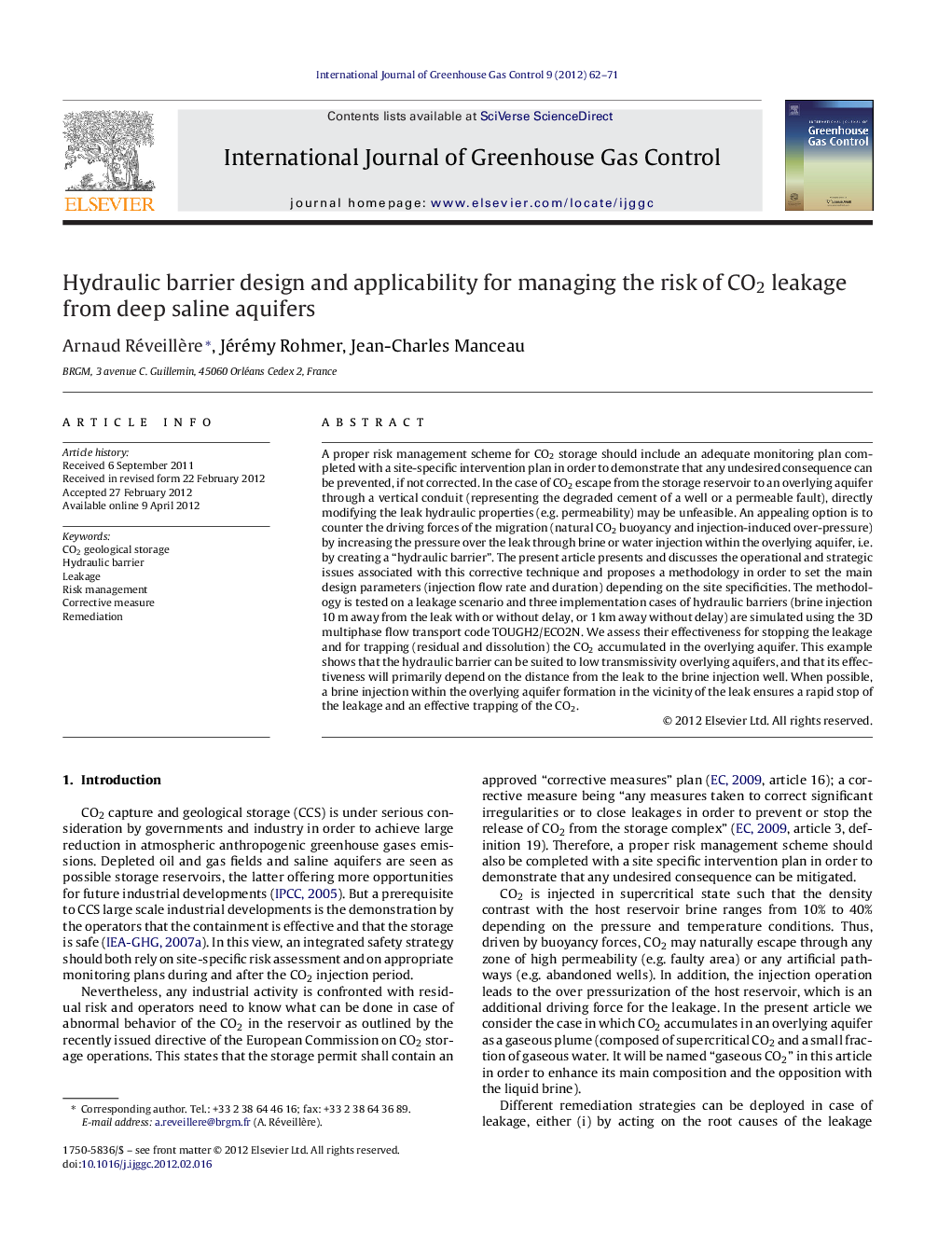| کد مقاله | کد نشریه | سال انتشار | مقاله انگلیسی | نسخه تمام متن |
|---|---|---|---|---|
| 1743408 | 1522014 | 2012 | 10 صفحه PDF | دانلود رایگان |

A proper risk management scheme for CO2 storage should include an adequate monitoring plan completed with a site-specific intervention plan in order to demonstrate that any undesired consequence can be prevented, if not corrected. In the case of CO2 escape from the storage reservoir to an overlying aquifer through a vertical conduit (representing the degraded cement of a well or a permeable fault), directly modifying the leak hydraulic properties (e.g. permeability) may be unfeasible. An appealing option is to counter the driving forces of the migration (natural CO2 buoyancy and injection-induced over-pressure) by increasing the pressure over the leak through brine or water injection within the overlying aquifer, i.e. by creating a “hydraulic barrier”. The present article presents and discusses the operational and strategic issues associated with this corrective technique and proposes a methodology in order to set the main design parameters (injection flow rate and duration) depending on the site specificities. The methodology is tested on a leakage scenario and three implementation cases of hydraulic barriers (brine injection 10 m away from the leak with or without delay, or 1 km away without delay) are simulated using the 3D multiphase flow transport code TOUGH2/ECO2N. We assess their effectiveness for stopping the leakage and for trapping (residual and dissolution) the CO2 accumulated in the overlying aquifer. This example shows that the hydraulic barrier can be suited to low transmissivity overlying aquifers, and that its effectiveness will primarily depend on the distance from the leak to the brine injection well. When possible, a brine injection within the overlying aquifer formation in the vicinity of the leak ensures a rapid stop of the leakage and an effective trapping of the CO2.
► Correction measures on the natural CO2 leakage pathways are hardly feasible.
► Hydraulic barrier counters the overpressure driving the migration.
► Implementation issues are discussed and a design methodology is proposed.
► Different deployment configurations are tested through 3D flow simulations.
► Trapping of the CO2 accumulation is enhanced in some configurations.
Journal: International Journal of Greenhouse Gas Control - Volume 9, July 2012, Pages 62–71